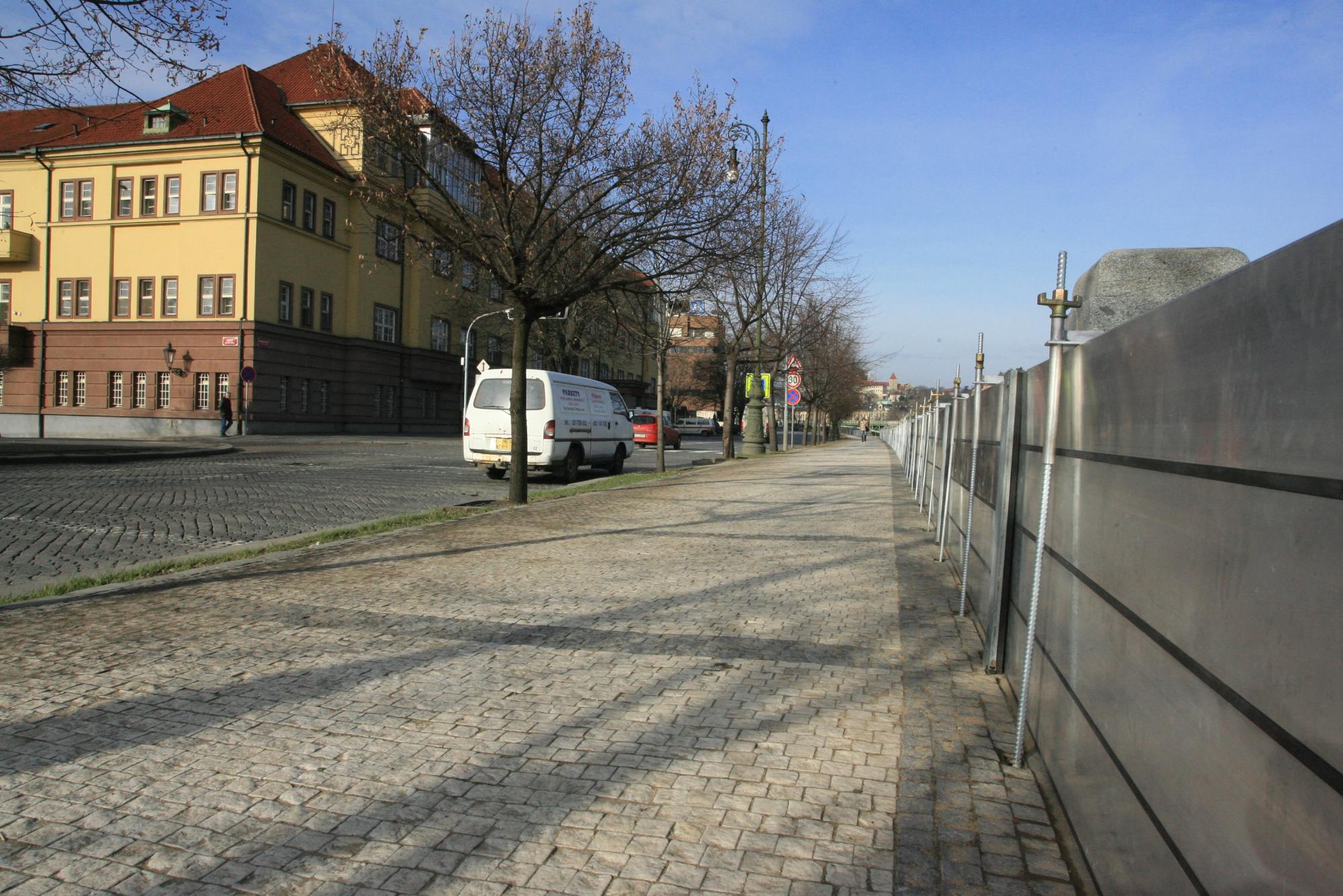Prague is investing almost CZK 50 million to improve flood protection measures in the city centre. The project will increase protection in the central part of the metropolis to the level of the 2002 flood with a safety margin of another 30 centimetres.
The main changes will affect several important locations in the city centre. "The flood protection in the centre of Prague is working well, but we do not want to rest on our laurels. Therefore, we will replace the older elements on the Masaryk, Smetana, Alš and Dvořák embankments with new ones and add sections where only temporary sandbag dikes have been built so far. We will raise the protection to the level of Q 2002 with a 30-centimetre reserve. This is almost CZK 48 million that we are investing in the safety and preparedness of Prague," said Michal Hroza, Prague City Councillor for Infrastructure.
Mayor Bohuslav Svoboda adds: "I am proud of the flood protection measures that Prague has built and continues to improve. Regular exercises and inspections confirm that we are ready to withstand a crisis, as we have done twice in the past two years."
Details of the planned modifications
First, the existing mobile barrier will be increased in the sections of Masaryk, Smetanova, Alš (in the area of the Four Seasons Hotel) and Dvořák embankments (Na Františku). The construction works will include:
- Demolition of the stone thresholds
- Removal of the stainless steel anchor plates of the existing barriers
- Replacing them with new stainless steel structures already in use in other parts of the city
The project also envisages the replacement of some temporary elements where sandbags have been placed during floods. On the section of Na Františku, part of the protection will be solved with a concrete wall.
The winner of the public contract was Environmental Building with a bid price of CZK 47,691,564.25 excluding VAT. The construction should take 12 months to complete.
Last year's floods tested the city's readiness
The new investments come after the experience of last September 2024, when Prague faced the threat of widespread flooding due to extreme rainfall caused by Storm Boris. The city took a number of preventive measures that proved effective.
In September 2024, Prague was placed on high flood warning. Forecasts indicated that water levels could reach the so-called 100-year water level, with an expected peak on the night of 14-15 September.
The city responded by installing flood barriers in the historic center, closing the waterfront to the public, and other measures including closing the Zoo and using steel gates to close the Devil's Gate. The reservoirs at the Vltava cascade dams were also emptied to reduce the risk of overflow.
Despite the severe warnings, the actual impact of the floods in Prague was relatively limited. The water did flood one metro station, leading to its temporary closure, but the rest of the metro remained operational. No extensive damage to infrastructure or houses was reported, and there was no need to evacuate residents.
In contrast to Prague, regions such as Moravia and Silesia were much worse affected, with thousands of evacuees, widespread power outages and severe damage to infrastructure. Total damage in the Czech Republic was estimated at around USD 3 billion, with at least 16 people killed in the floods.
The successful management of the flood situation in Prague was attributed to the improved flood protection that was built after the disastrous floods in 2002. The new investments are intended to further strengthen this protection and ensure that the capital will be even better prepared for future floods.



